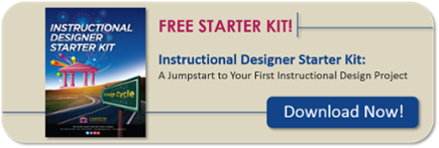Photo by: You X Ventures via Unsplash
Lights. Camera. Action. It’s time for role play!
The good, the bad, and the ugly. I’ve seen it all when it comes to role play in the learning environment. Have you had a role play end and you felt like you should give out an Oscar for best actor? While the movie “The Good, The Bad, and The Ugly” may have been up to receive a few accolades, this isn’t our goal in the learning environment. Has the opposite happened? Where everyone suddenly has stage fright and doesn’t want to volunteer to go first? And my all-time favorite, the inevitable mumbling and grumbling about not liking role play. Has this ever happened to you?
Role play is usually used to practice interpersonal and communication skills. Ideally, role play should be used in situations where the learner needs to either practice handling confrontational situations or answer questions, handle problems, provide customer service, or solve a complaint.
Too often I’ve seen poorly designed role plays. The mistakes tend to fall into these categories: level of relevance and realism, level of detail, and clarity of instructions.
Here are five best practices to design a “Good” role play and hopefully avoid “the Bad, and the Ugly!”
Best Practice #1
Make the role play situations as realistic as you can. When possible, base them on real events. However, modify the details enough so the participants do not get caught up in the situation (Hello, Oscar!) instead of practicing the skill.
Best Practice #2
Add just the right amount of background information and details to the roles without becoming overly complex. You don’t want your learners to get lost in the details or feel overwhelmed by them.
Best Practice #3
Make sure each role is clear. Include all necessary facts and information in the supporting materials. If the information is “common knowledge,” ensure it is included in the material for all roles (including the observer). For example:
Background Information:
– The organization manages fundraising projects for non-profit organizations.
– Project leaders prepare reports for their clients at the first of each month detailing revenues and expenses from fundraising activities.
Information Known to Everyone:
– A senior project leader, whose work has always been on time, has missed three report deadlines for a client.
Characters:
AVP
– Job duties: manages 6 project leaders.
– Traits/Personality: warm, friendly, and competent.
– Behavior: shows he is worried that his best project leader has missed deadline.
– Information for Character Only: major client has threatened to change companies because of project leader’s missed deadlines.
– Purpose: deliver feedback to the project leader about the current performance and outline the consequences of the missed deadline (i.e. client will leave).
Project Leader
– Job Duties: senior project leader.
– Traits/Personality: very organized, detailed, and precise.
– Behavior: late for work. Leaves early. Appears scattered. Minimal contact with others in the office.
– Information for Character Only: father recently diagnosed with serious illness. Has moved her father into her own home but the stress is too much on her.
– Purpose: must meet with the boss. Would rather just ignore the missed deadlines. Just wants to promise it won’t happen again and go back to work.
Best Practice #4
Give clear instructions on the actions required of each role. For example:
For those participating in the role play:
– Read the situation and your role.
– Review the steps listed on the performance checklist.
– Meet with the instructor to clarify your role.
– You will have 15 minutes for the role play.
For those observing the role play:
– Monitor time for each role play. Let players know when 5 minutes of the 15 minutes remain.
– Record your observations and comments on the performance checklist.
– Deliver feedback according to the standard: what worked, areas for improvement, and suggestions for improvement.
Best Practice #5
Tell the learners the “why” before starting the role play. Share the benefit of the role play. Let them know the classroom is a safe place for them to practice this new skill so they can better perform their job. Better job performance can potentially lead to more opportunities, promotions, awards, and raises!
By using the above best practices, you will be able to design and deliver better quality role plays which should result in less Oscars and more job performance results! Role play is just one way to practice a new skill. To learn how to design other practice exercises, bring your team together for our Advanced Instructional Design workshop!


